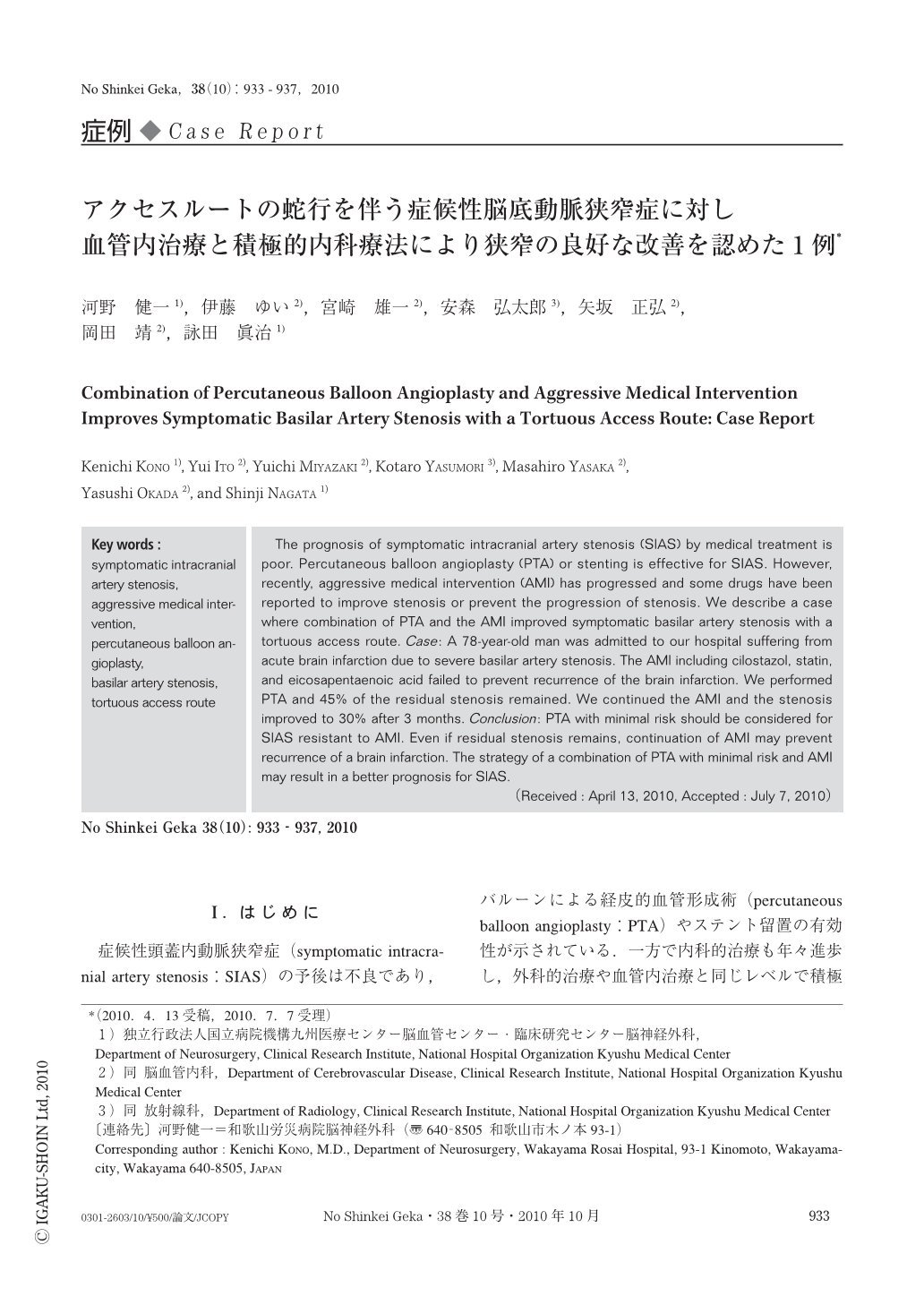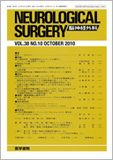Japanese
English
- 有料閲覧
- Abstract 文献概要
- 1ページ目 Look Inside
- 参考文献 Reference
Ⅰ.はじめに
症候性頭蓋内動脈狭窄症(symptomatic intracranial artery stenosis:SIAS)の予後は不良であり,バルーンによる経皮的血管形成術(percutaneous balloon angioplasty:PTA)やステント留置の有効性が示されている.一方で内科的治療も年々進歩し,外科的治療や血管内治療と同じレベルで積極的内科療法(aggressive medical intervention:AMI)の重要性が主張され,SIASに対してもAMIのみで狭窄進行予防や狭窄改善の効果を示した報告があり,着目されている.今回,われわれはアクセスルートの蛇行を伴った症候性脳底動脈狭窄症に対しPTAとAMIの併用で良好な経過を経た1例を経験したので報告する.
The prognosis of symptomatic intracranial artery stenosis (SIAS) by medical treatment is poor. Percutaneous balloon angioplasty (PTA) or stenting is effective for SIAS. However, recently, aggressive medical intervention (AMI) has progressed and some drugs have been reported to improve stenosis or prevent the progression of stenosis. We describe a case where combination of PTA and the AMI improved symptomatic basilar artery stenosis with a tortuous access route. Case: A 78-year-old man was admitted to our hospital suffering from acute brain infarction due to severe basilar artery stenosis. The AMI including cilostazol, statin, and eicosapentaenoic acid failed to prevent recurrence of the brain infarction. We performed PTA and 45% of the residual stenosis remained. We continued the AMI and the stenosis improved to 30% after 3 months. Conclusion: PTA with minimal risk should be considered for SIAS resistant to AMI. Even if residual stenosis remains, continuation of AMI may prevent recurrence of a brain infarction. The strategy of a combination of PTA with minimal risk and AMI may result in a better prognosis for SIAS.

Copyright © 2010, Igaku-Shoin Ltd. All rights reserved.


